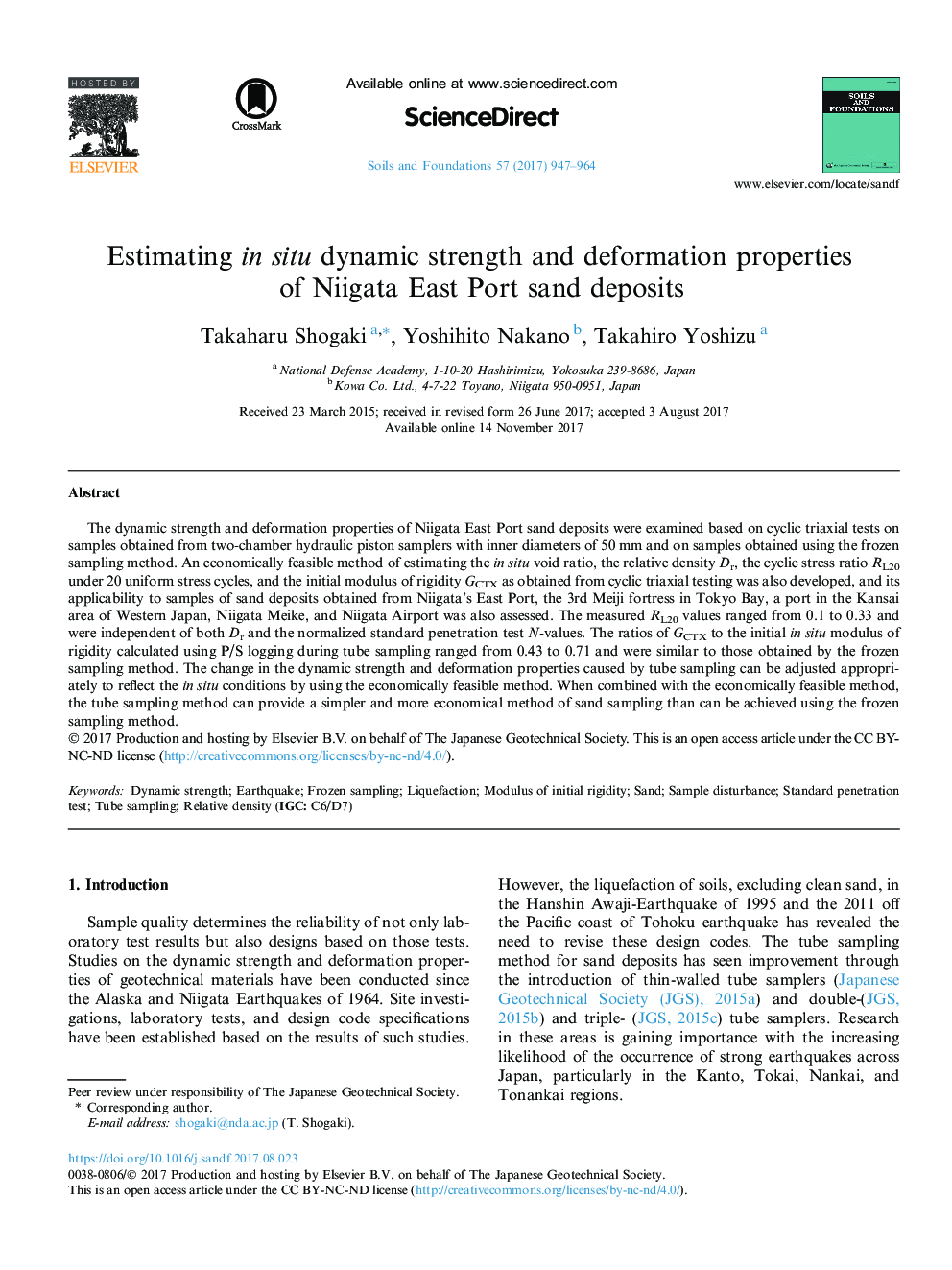| Article ID | Journal | Published Year | Pages | File Type |
|---|---|---|---|---|
| 6773837 | Soils and Foundations | 2017 | 18 Pages |
Abstract
The dynamic strength and deformation properties of Niigata East Port sand deposits were examined based on cyclic triaxial tests on samples obtained from two-chamber hydraulic piston samplers with inner diameters of 50â¯mm and on samples obtained using the frozen sampling method. An economically feasible method of estimating the in situ void ratio, the relative density Dr, the cyclic stress ratio RL20 under 20 uniform stress cycles, and the initial modulus of rigidity GCTX as obtained from cyclic triaxial testing was also developed, and its applicability to samples of sand deposits obtained from Niigata's East Port, the 3rd Meiji fortress in Tokyo Bay, a port in the Kansai area of Western Japan, Niigata Meike, and Niigata Airport was also assessed. The measured RL20 values ranged from 0.1 to 0.33 and were independent of both Dr and the normalized standard penetration test N-values. The ratios of GCTX to the initial in situ modulus of rigidity calculated using P/S logging during tube sampling ranged from 0.43 to 0.71 and were similar to those obtained by the frozen sampling method. The change in the dynamic strength and deformation properties caused by tube sampling can be adjusted appropriately to reflect the in situ conditions by using the economically feasible method. When combined with the economically feasible method, the tube sampling method can provide a simpler and more economical method of sand sampling than can be achieved using the frozen sampling method.
Related Topics
Physical Sciences and Engineering
Earth and Planetary Sciences
Geotechnical Engineering and Engineering Geology
Authors
Takaharu Shogaki, Yoshihito Nakano, Takahiro Yoshizu,
